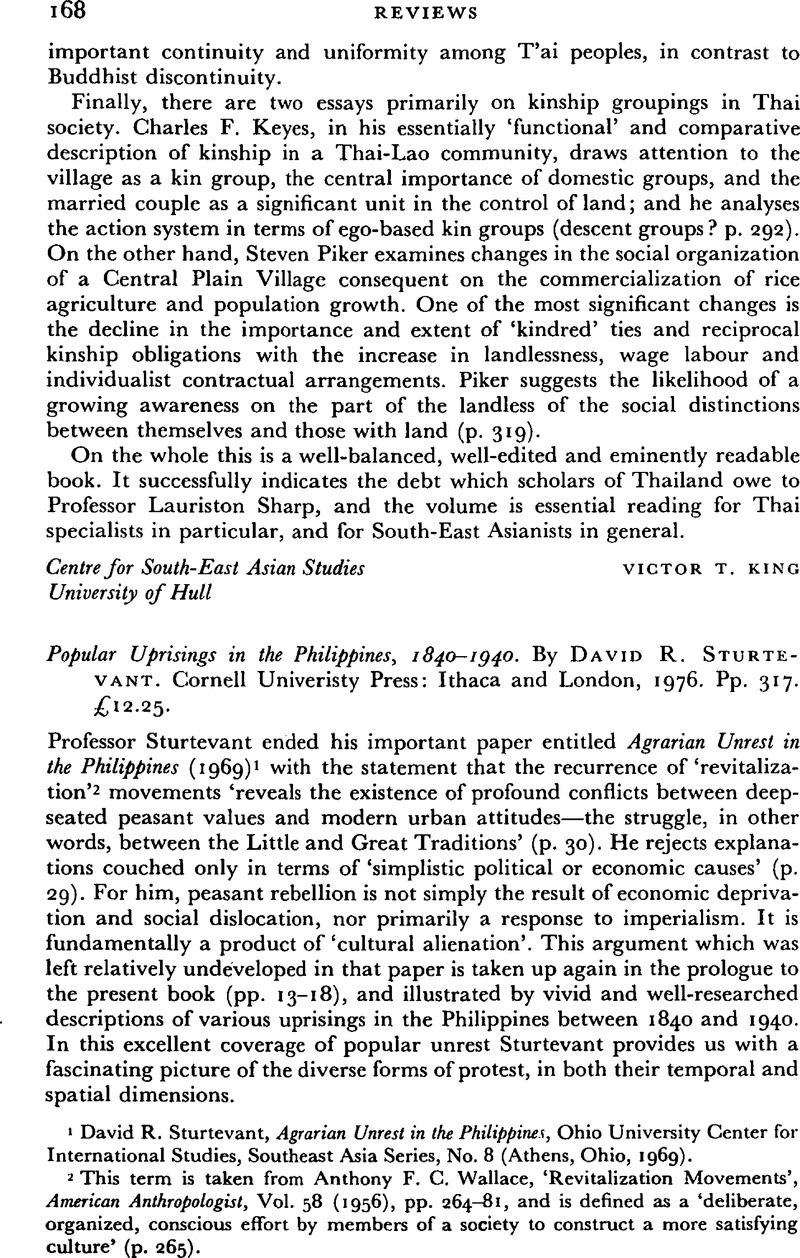Published online by Cambridge University Press: 28 November 2008

1 Sturtevant, David R., Agrarian Unrest in the Philippines, Ohio University Center for International Studies, Southeast Asia Series, No. 8 (Athens, Ohio, 1969).Google Scholar
2 This term is taken from Anthony, F. C. Wallace, ‘Revitalization Movements’, American Anthropologist, Vol. 58 (1956), pp. 264–81, and is defined as a ‘deliberate, organized, conscious effort by members of a society to construct a more satisfying culture’ (p. 265).Google Scholar
3 Other writers before him have also emphasized this process of cultural contact and disruption. See, for example, Firth, Raymond, Elements of Social Organization (C. A. Watts: London, 1951), p. 113;Google ScholarWorsley, P., The Trumpet Shall Sound. A Study of ‘Cargo’ Cults in Melanesia (Paladin, 2nd ed., 1970), p. 256;Google ScholarInglis, J., ‘Cargo Cults: The Problem of Explanation’, Oceania, Vol. 27 (1957), pp. 249–63CrossRefGoogle Scholar, and ‘Interpretation of Cargo Cults—Comments’, Oceania, Vol. 30 (1959), pp. 155–8.CrossRefGoogle Scholar
4 See van der Kroef, J., ‘Javanese Messianic Expectations. Their Origin and Cultural Context’, Comparative Studies in Society and History, Vol. I (1959), pp. 299–323;CrossRefGoogle ScholarThrupp, S. L. (ed.), Millennial Dreams in Action: Essays in Comparative Study (Mouton: The Hague, and Humanities Press: New York, 1962), p. 26.Google Scholar